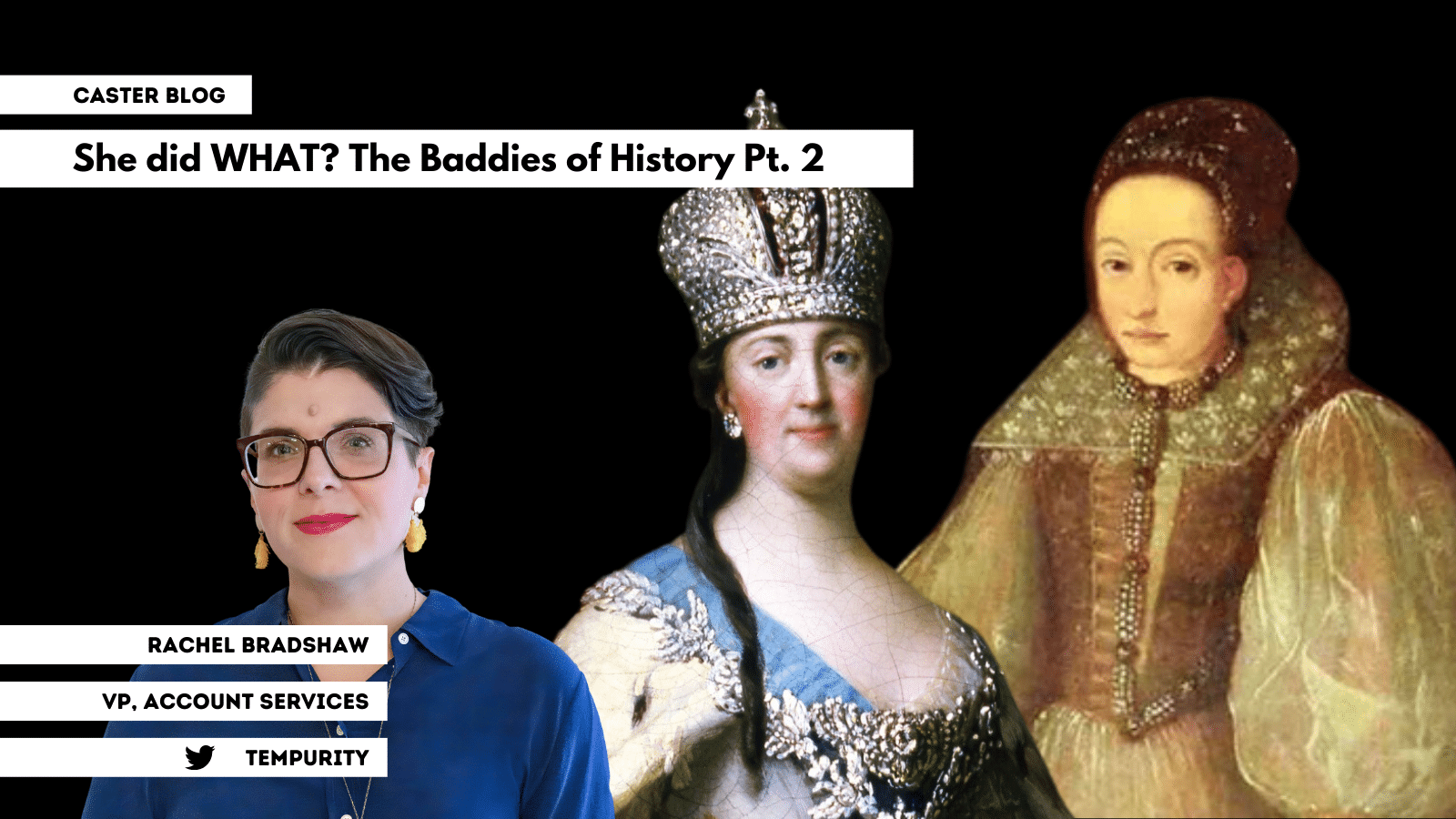
She did WHAT? The Baddies of History Pt. 2
It’s Women’s History Month, and Caster is spending it with the girls who smoke behind the bleachers during gym class. Last week, we added some dimension to unfairly flattened stories of Cleopatra and Marie Antionette. This week, we’re taking a look at two women who shocked the world: Catherine the Great and Elizabeth Bathory, the Bloody Countess.
Catherine the Great
You might think Catherine the Great’s reputation isn’t that bad. I mean, check the nickname, am I right? But before the delightful (and mostly made up) Hulu series The Great, Catherine’s most famous accomplishment was dying while [REDACTED, TOO HOT FOR THE CASTER BLOG] with a horse.
Which absolutely did not happen. I mean, come on. But she was an independent female ruler in a deeply patriarchal society:
The rumor is rooted in the fact that Catherine was great at a lot of the era’s traditional masculine pastimes, including “military expansionism,” “riding horses,” and “having casual affairs.” The British and French press did not like our Catherine because she was hoovering up territory across the continent, and as a result, they published a lot of political cartoons mocking her sexual appetites. After she died, this propaganda served as the basis for a rumor meant to tear down her legacy. Too late: She has already established Russia as one of Europe’s great powers, vastly expanded the country’s borders, and founded the continent’s first public university for women.
Elizabeth Bathory
Elizabeth Bathory is one of history’s most infamous serial killers. She’s said to have murdered somewhere between 80 and 650 people – there’s even a Venom song about her. Did she do it? Jury’s out—because she never had a trial. What she did have was a lot of wealth and land, a sovereign deep in her debt, and an ambitious cousin in the king’s court.
King Matthias of Hungary ordered Bathory’s cousin Thurzo to investigate rumors that she was up to no good. Thurzo collected over 300 reports, most of them from lesser nobles with a good reason to suck up to the indebted king. When Thurzo finally went to confront Bathory, he claims to have caught her literally red-handed, surrounded by living and dead victims. We’ve only got Thurzo’s word for this – almost all the testimony was second-hand, and no one else had any physical evidence. There were servants who testified as eyewitnesses of her crimes, but they confessed under torture and were executed right afterward.
As a result of Thurzo’s investigation, Bathory was confined in her castle for the rest of her life. That’s right: The servants got the death sentence while the “Bloody Countess” got house arrest. Why the leniency? Bathory’s family agreed to cancel the king’s debt in exchange for keeping custody of her. Today, many historians view Thurzo’s investigation as political hit, ordered by the king to get rid of an annoyingly powerful noble.
Getting it Right is a Year-Round Job
The stories of Cleopatra, Catherine the Great, Marie Antionette, and Elizabeth Bathory show the power of PR, used for evil. These complex women have been reduced to simple brand identities – the temptress, the killer – zippy catchphrases – “Let them eat cake!” – and sticky stories – Catherine’s…horsemanship. They also demonstrate just how much work is required to correct public perceptions once they’ve been established. None of this is new scholarship – the real history of these women has been known for decades, and the fake news is still spread and taught. Reputation rehabilitation takes more than a simple correction, a single campaign, or one month out of the year. It takes constant messaging, consistently pushing the truth forward so the rumors don’t have room to expand and fill the void.
I’d love to hear more about your favorite misremembered women – or to help you set the record straight about your own brand. Connect with me at @Tempurity across social to keep the conversation going.

